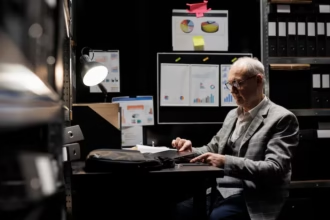Gastroshiza may not be a term you encounter every day, yet it represents a fascinating and complex condition that affects countless lives. Imagine the human body’s intricate design—now picture how this carefully constructed blueprint can sometimes go awry. Gastroshiza is one such anomaly, where abdominal organs develop outside of the body due to an opening in the abdominal wall. This rare defect might sound alarming, but understanding it can shed light on both its challenges and triumphs.
As we delve into the world of gastroshiza, we’ll explore its history, symptoms, diagnosis methods, treatment options, and even what life looks like for those affected by this condition. With advancements in medical research paving new pathways for better outcomes, there’s much more than meets the eye when discussing gastroshiza. Join us as we unveil this hidden anatomy and bring awareness to a topic that deserves our attention.
What is Gastroshiza?
Gastroshiza is a congenital condition that occurs during fetal development. It manifests as an opening in the abdominal wall, allowing internal organs to protrude outside the body. This defect typically appears on one side of the umbilical cord and can affect various organs, including the intestines.
Unlike other similar conditions, such as omphalocele, gastroshiza does not involve a protective sac around the exposed organs. This exposure can lead to complications like infection or damage if left untreated.
The exact cause of gastroshiza remains unclear, but factors such as maternal age and environmental influences may play a role in its occurrence. Despite its rarity—affecting approximately 1 in 10,000 births—understanding this condition is crucial for early diagnosis and effective treatment options tailored for those affected.
The History and Discovery of Gastroshiza
Gastroshiza has a fascinating history that stretches back centuries. Its recognition as a distinct condition emerged in the 19th century, when medical professionals began documenting cases of infants born with abdominal wall defects.
In 1861, Dr. John William Ballantyne provided one of the earliest detailed descriptions of gastroshiza. He observed newborns exhibiting protruding intestines outside their bodies, highlighting the urgency for understanding this anomaly.
As medicine progressed into the 20th century, advancements in imaging technology allowed for more accurate prenatal diagnoses. The ability to detect gastroshiza before birth transformed how families and healthcare providers approached management options.
Research continued to evolve throughout the years, revealing genetic factors associated with this condition. Today, ongoing studies aim to unravel further complexities surrounding its causes and effects on affected individuals’ lives. Each discovery adds depth to our understanding of this unique developmental disorder.
Symptoms and Diagnosis
Gastroshiza is often identified during routine prenatal ultrasounds. Expectant parents may notice signs that something isn’t quite right.
Common symptoms can include abdominal wall defects in newborns, where the intestines protrude outside the body. This is usually visible at birth and might appear alarming to new parents.
Diagnosis typically involves imaging techniques like ultrasound or MRI, which help pinpoint the extent of the condition before birth. After delivery, a physical examination confirms gastroshiza’s presence.
Doctors look for specific features such as how much intestine is exposed and whether other organs are involved. Understanding these aspects helps shape an effective treatment plan tailored to each child’s needs.
Prompt diagnosis plays a crucial role in managing gastroshiza effectively and supporting families from day one.
Treatment Options
When it comes to treating gastroshiza, early intervention is crucial. Most affected infants undergo surgery shortly after birth. The procedure typically involves carefully placing the exposed organs back into the abdominal cavity and closing any defects in the abdominal wall.
Surgical techniques have evolved significantly, allowing for minimally invasive options when possible. This can lead to shorter recovery times and reduced complications.
Post-surgery, ongoing care is vital. These patients may require nutritional support or therapy as they grow. Regular follow-ups with pediatric specialists help monitor their development and address any arising concerns.
In some cases, additional surgeries might be necessary as the child grows older, particularly if there are complications related to organ function or growth issues. Each treatment plan is tailored to meet individual needs based on specific conditions surrounding each case of gastroshiza.
Living with Gastroshiza
Living with gastroshiza can be a journey filled with challenges, but many find strength in their resilience. Families often adapt to the unique needs of their child, developing routines that prioritize health and well-being.
Feeding techniques may vary significantly. Some infants require specialized formulas or tube feeding initially. As they grow, parents learn what works best for their child’s nutrition and comfort.
Medical follow-ups become part of life’s rhythm. Regular appointments help monitor growth and address any complications that may arise. Support groups provide invaluable connections where shared experiences foster understanding.
Psychosocial aspects are vital too. Children learn to navigate social situations as they get older, building confidence despite physical differences. Emotional support from family and friends plays a crucial role in this process.
Every day brings new opportunities for joy, learning, and connection within families facing gastroshiza together. The experience shapes not just individual lives but also strengthens community bonds through empathy and shared stories.
Cutting-Edge Research and Advancements
Recent advancements in gastroshiza research are paving the way for better understanding and treatment options. Scientists are delving into genetic factors that may contribute to this condition, revealing potential links that could inform future therapies.
Innovative surgical techniques are being developed as well. Minimally invasive procedures show promise in reducing recovery times and improving outcomes for affected infants. Surgeons now have access to enhanced imaging technologies, allowing for precise interventions.
Moreover, researchers are exploring regenerative medicine approaches. These methods aim to repair damaged tissues and improve gastrointestinal function post-surgery.
Collaboration across disciplines is crucial. Geneticists, pediatricians, and surgeons are coming together to share insights and develop comprehensive care plans tailored specifically for patients with gastroshiza.
Public awareness campaigns also play a vital role in fostering support networks. Increased visibility helps families connect with resources while promoting ongoing research initiatives aimed at addressing this complex condition.
Raising Awareness and Support for Those Affected
Raising awareness about gastroshiza is crucial for fostering understanding and support. Many people remain unaware of this condition, which can lead to isolation for affected families.
Social media plays a significant role in spreading information. Sharing personal stories helps humanize the experience. It connects those impacted with others who understand their journey.
Community events also create opportunities for education. Workshops and seminars give healthcare professionals a platform to discuss gastroshiza openly. These gatherings provide valuable resources for both parents and caregivers.
Support groups are vital as well. They offer emotional solace and practical advice from others navigating similar challenges. Finding community can transform feelings of helplessness into empowerment.
Advocacy efforts, such as fundraising campaigns, further enhance research funding. Increased financial support leads to advancements in treatment options and better outcomes for patients over time.
Conclusion
Gastroshiza is a rare condition that presents unique challenges for those affected and their families. Understanding its intricacies can help foster empathy and support within the community. The journey from diagnosis to treatment involves navigating various hurdles, but advancements in medical research are shedding light on innovative approaches.
Living with gastroshiza requires resilience. Each individual’s experience is different, shaped by personal circumstances and the level of care received. Awareness plays a crucial role in improving outcomes and resources for patients.
As we delve deeper into this condition, fostering understanding becomes essential. By raising awareness, we not only help support individuals facing gastroshiza but also encourage further research that may lead to better treatments in the future. Every effort counts when it comes to building a supportive environment for those impacted by this complex condition.

















